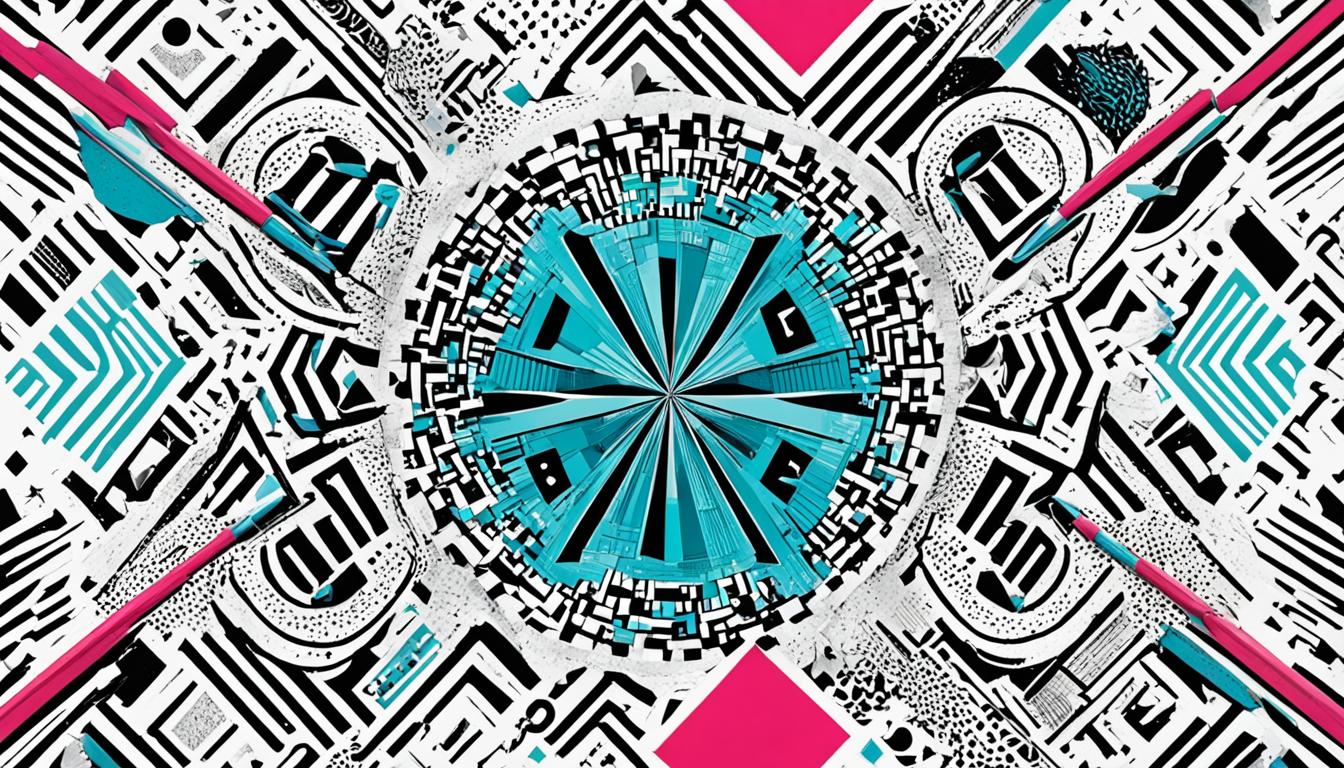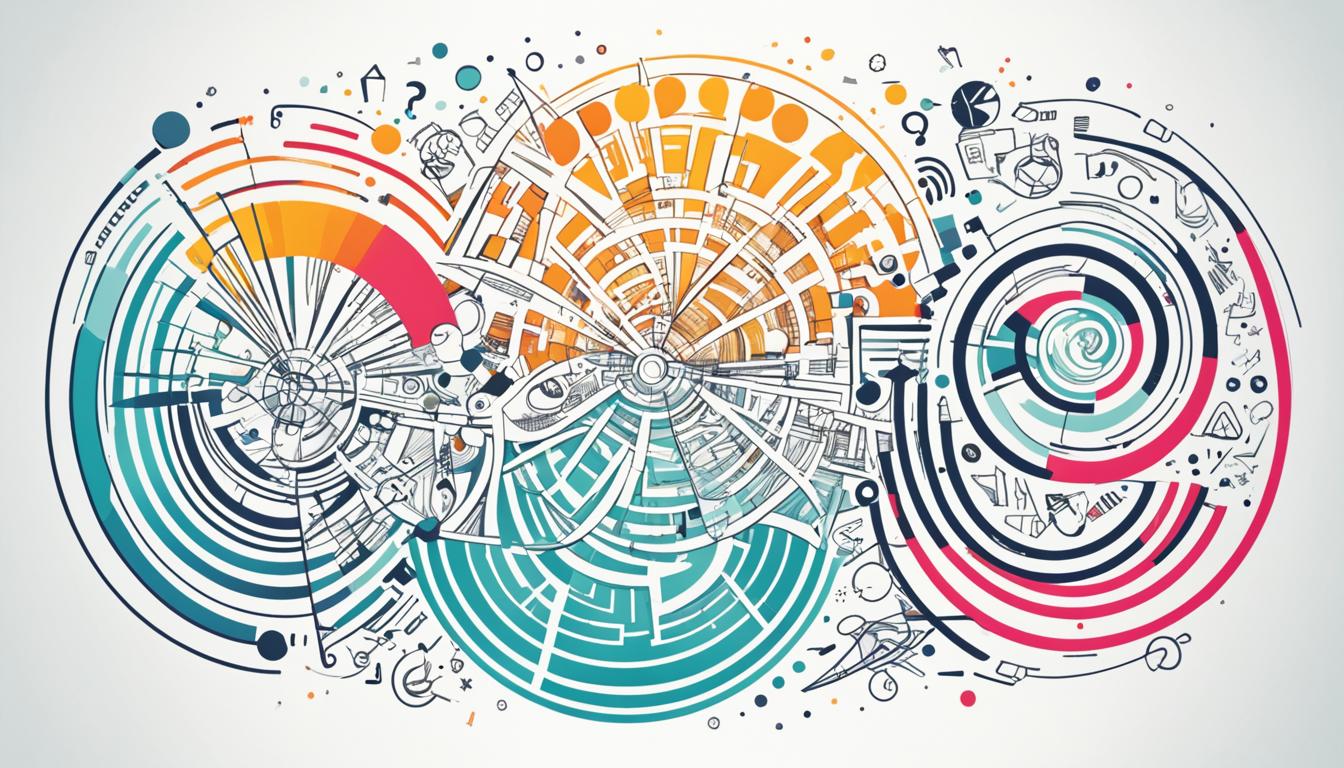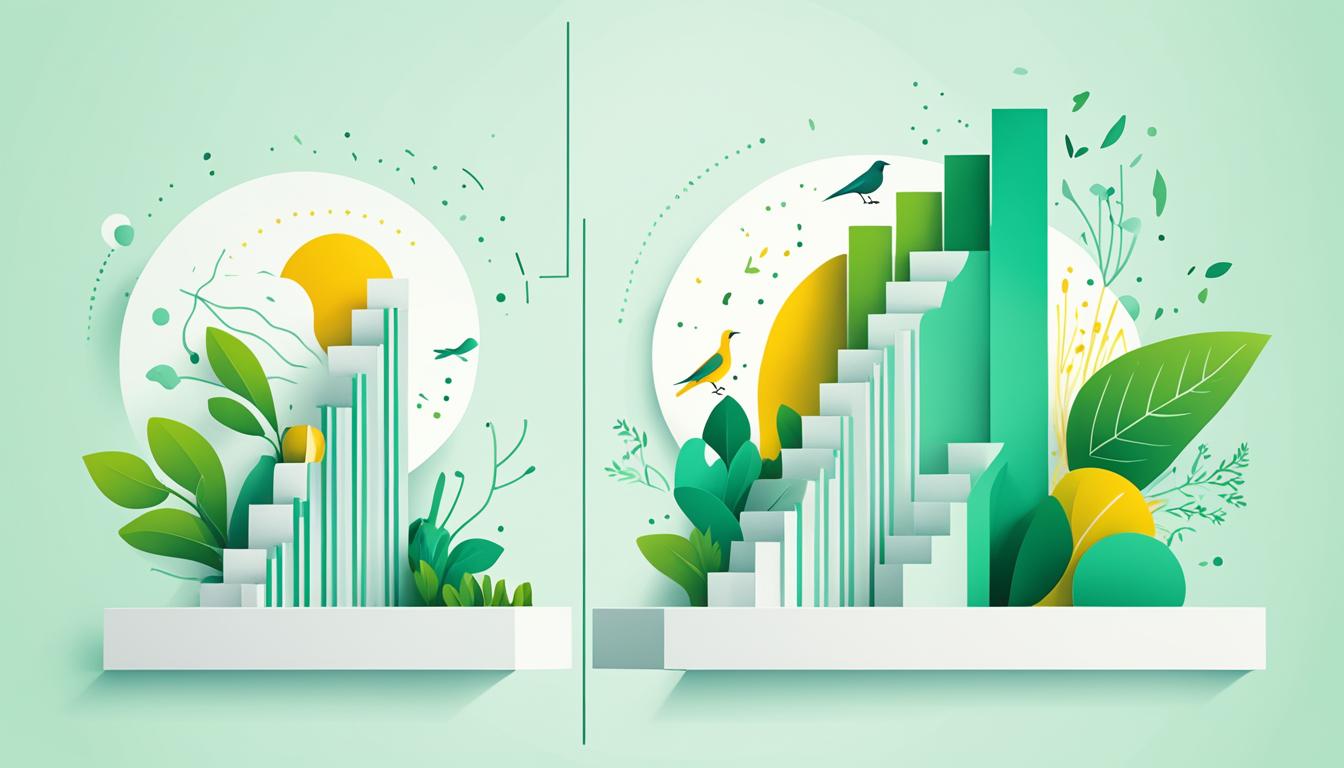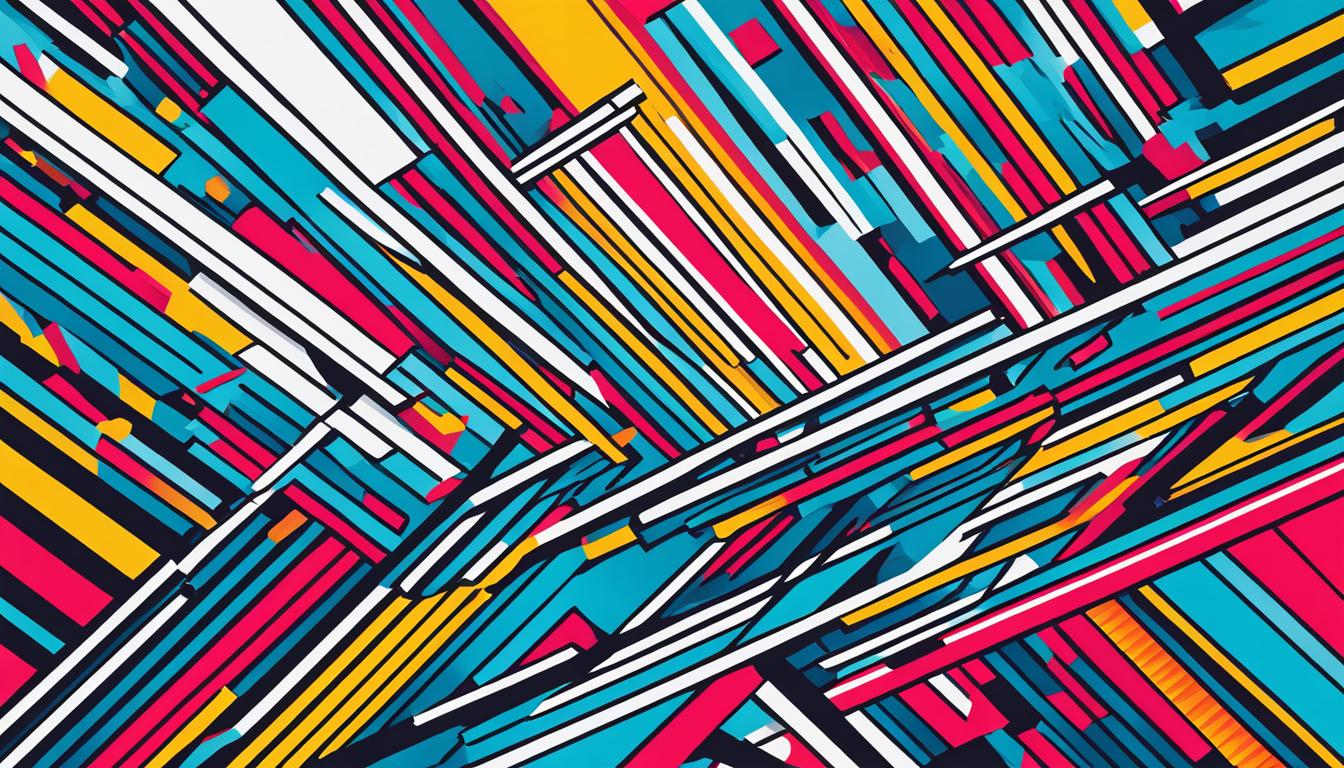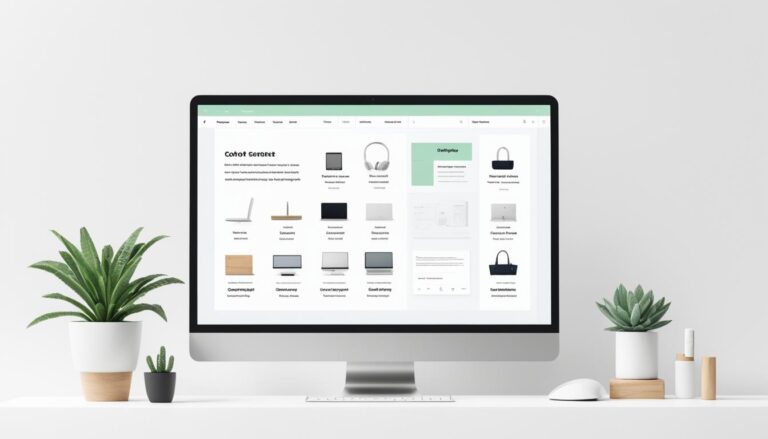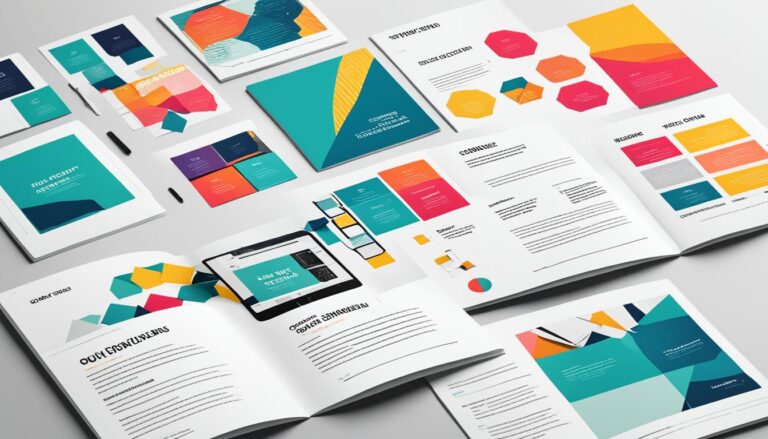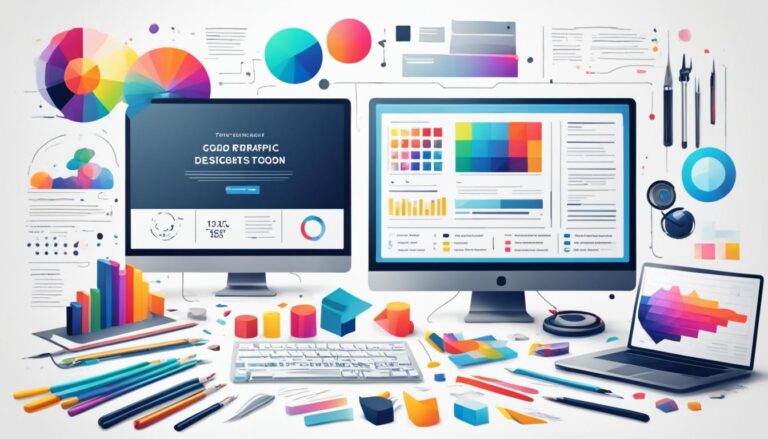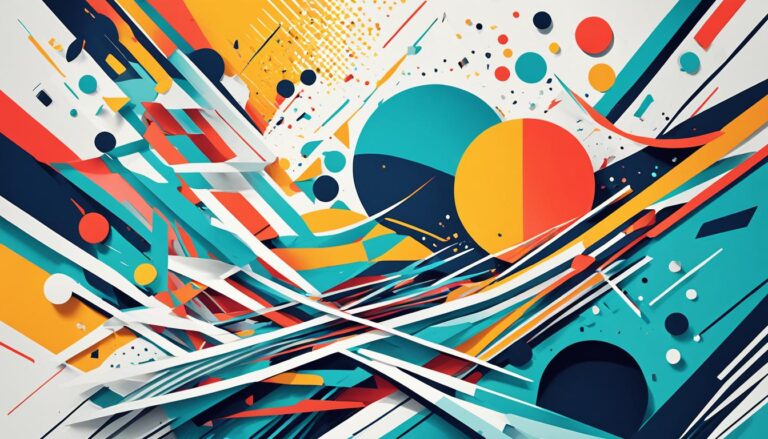Graphic Design Defined: Best Understanding Explained
Graphic design is a fundamental aspect of visual communication, encompassing the composition and arrangement of visual elements to convey or enhance a message. It has been a vital practice for thousands of years, playing a significant role in various art forms, advertising, and marketing.
Today, the graphic design industry has evolved into a diverse and expansive field, offering numerous disciplines and specializations. From magazine layouts to posters and packaging, graphic designers create compelling visual content that elicits emotional responses from viewers.
There are several common types of graphic design, each serving a specific purpose. Brand design focuses on creating consistent brand identities, including logos, brand colors, and packaging. Marketing design involves visually appealing designs for marketing initiatives, such as emails, billboards, and print ads.
Graphic design also encompasses web design, illustrating the practice of designing visually engaging and functional websites. Illustration design brings concepts to life through captivating and artistic visuals. These are just a few examples of the diverse range of possibilities within the graphic design industry.
Brand Design: Creating Consistent Brand Identities
Brand design is a crucial aspect of establishing and maintaining a company’s identity in the marketplace. It involves setting guidelines and best practices to ensure a consistent brand image across all of the company’s materials and touchpoints. By implementing a cohesive brand design strategy, businesses can create a strong and recognizable identity that resonates with their target audience.
One of the key elements of brand design is the creation of logos, which serve as visual representations of a brand’s identity. Logos should be unique, memorable, and reflective of the company’s values and personality. They play a vital role in establishing brand recognition and building trust among consumers.
Another crucial aspect of brand design is the selection of brand colors. Colors evoke specific emotions and can influence how a brand is perceived. Designers carefully choose colors that align with the brand’s values and evoke the desired emotional response from the audience. These colors are then consistently used across all branded materials, helping to reinforce brand recognition and create a cohesive visual identity.
Creating templates for various branded materials is also an important aspect of brand design. Templates ensure consistency in the design of marketing collateral, such as brochures, flyers, and social media posts. By providing a set of design guidelines, brand designers help maintain a unified visual language and streamline the creation of branded materials.
Designing packaging is another critical component of brand design. Packaging not only protects the product but also serves as a promotional tool. It plays a significant role in communicating the brand’s values, attracting customers, and differentiating the product from competitors. A well-designed package can create a lasting impression and contribute to the overall brand experience.
Good brand designers possess an understanding of marketing design and web design principles. They are adept at translating a brand’s identity and values into visually appealing designs that resonate with consumers. They also stay up-to-date with emerging design trends and platforms to ensure that the brand’s visual identity remains fresh and relevant.
Benefits of Brand Design
Investing in brand design yields numerous benefits for businesses:
- Creates a strong and memorable brand identity
- Builds trust and credibility with consumers
- Facilitates brand recognition and differentiation
- Enhances the overall brand experience
- Increases brand loyalty and customer engagement
Marketing Design: Graphic Design for Effective Marketing
Marketing design plays a crucial role in creating visually appealing designs that drive successful marketing initiatives. With a focus on promotional materials and visual design, marketing designers craft a wide range of assets to capture the attention of the target audience and communicate messages effectively.
In the realm of marketing design, designers are responsible for translating strategic marketing goals into compelling visuals. They collaborate closely with brand designers to ensure consistency in messaging, while also capturing the unique essence of each campaign or platform.
The diverse range of marketing materials designed by professionals in this field includes:
- Emails – Eye-catching email designs that engage recipients and encourage click-throughs
- Newsletters – Visually appealing newsletters that inform and engage subscribers
- Billboards – Impactful billboard designs that capture the attention of passersby
- Posters – Creative poster designs that stand out and convey key messages
- Print Ads – Compelling print ad designs for magazines, newspapers, and various publications
- Trade Show Booths – Well-designed booths that attract visitors and showcase products or services
- Website Assets – Visually appealing graphics and images that enhance the overall user experience
To give you a better understanding of the scope and impact of marketing design, take a look at the following table that highlights some of the key aspects:
| Marketing Design | Promotional Materials | Visual Design |
|---|---|---|
| Designs that drive successful marketing initiatives | Emails, newsletters, billboards, posters, print ads, trade show booths, website assets | Captivating visuals that catch the audience’s attention and communicate messages effectively |
Key Takeaways:
Marketing design involves creating visually appealing designs for various marketing initiatives, ranging from emails and newsletters to billboards and website assets. Designers collaborate closely with brand designers to ensure consistency while tailoring visuals to individual campaigns or platforms.
Through marketing design, businesses can effectively communicate their messages, enhance brand recognition, and ultimately drive successful marketing campaigns. By utilizing the power of visual design in promotional materials, marketing designers play a pivotal role in capturing audience attention and influencing consumer perceptions.
Conclusion
Graphic design is a diverse field that encompasses a wide range of skills and disciplines, such as visual communication, creative thinking, and problem-solving. This industry offers numerous career opportunities for those with a passion for design. However, for graphic designers looking to take their career to the next level, transitioning to UX design can be a rewarding move.
UX design, or user experience design, focuses on creating enjoyable and intuitive experiences for users through research, problem-solving, and iterative design processes. Graphic designers can leverage their aesthetic skills and understanding of conventions and trends in UX design to create visually appealing and user-friendly digital products.
The demand for UX designers is on the rise, offering new opportunities and the potential for higher earning. While transitioning from graphic design to UX design may require acquiring new skills in user research and comprehending the multi-disciplinary nature of UX design, the aesthetic sense and creative thinking skills of graphic designers are invaluable assets that greatly benefit UX design projects.
By embracing the world of UX design, graphic designers can expand their career prospects and contribute to the creation of meaningful and impactful user experiences.
FAQ
What is graphic design?
Graphic design is the practice of composing and arranging the visual elements of a project. It involves creating visual content, such as magazine layouts, posters, and packaging, to convey or enhance a message.
How long has graphic design been around?
Graphic design has been an important part of visual communication for thousands of years.
What are the common types of graphic design?
The common types of graphic design include brand design, marketing design, web design, and illustration design, among others.
What is brand design?
Brand design involves setting guidelines and best practices for a company’s branded materials to ensure a consistent brand identity. It includes designing logos, selecting brand colors, creating templates, and designing packaging.
What is marketing design?
Marketing design focuses on creating visually appealing designs for marketing initiatives. This can include designing emails, newsletters, billboards, posters, print ads, trade show booths, and website assets.
What skills and disciplines does graphic design encompass?
Graphic design encompasses various skills and disciplines, including visual communication, creative thinking, and problem-solving.
How can graphic designers transition to UX design?
Graphic designers can transition to UX design by leveraging their aesthetic skills and understanding of conventions and trends. This may require developing new skills in user research and understanding the multi-disciplinary nature of UX design.
What is UX design?
UX design focuses on the user experience and involves research, problem-solving, and iterative design processes.
What are the benefits of transitioning from graphic design to UX design?
Transitioning from graphic design to UX design can present new opportunities and higher earning potential, as the demand for UX designers is increasing. The aesthetic sense and creative thinking skills of graphic designers can greatly benefit UX design projects.
